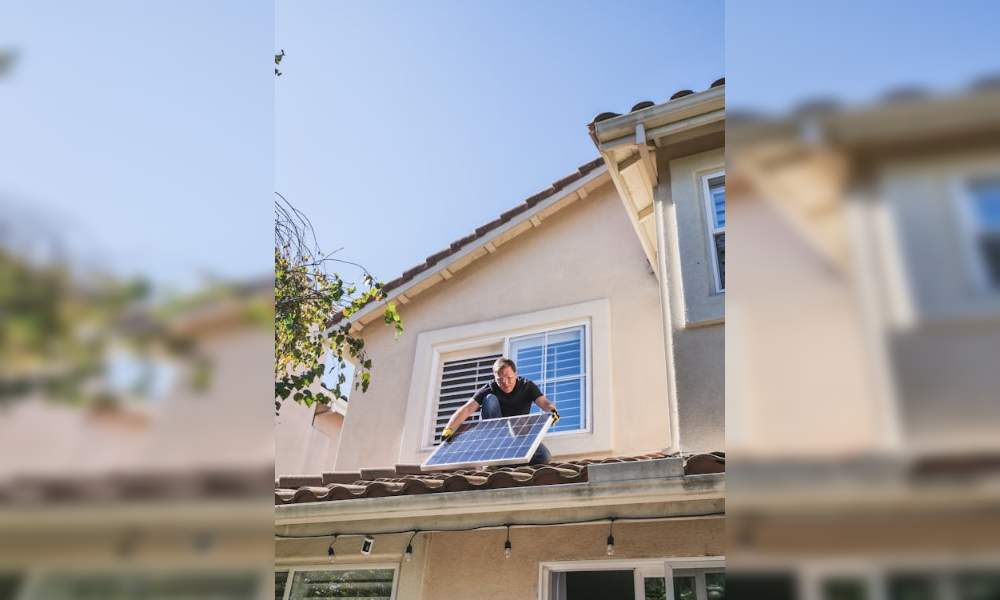When it comes to home maintenance, your roof is one of the most crucial components to focus on. It acts as the first line of defense against various elements, such as rain, snow, wind, and sunlight, ensuring that your home remains safe and comfortable.
Over time, however, your roof can succumb to wear and tear due to exposure to these elements, potentially leading to leaks, damage, and other issues that can compromise your home’s structural integrity.
Addressing roof issues promptly is essential not just to prevent further damage but also to avoid costly repairs down the line. Regular maintenance and timely repairs can significantly extend the life of your roof, preserving both its functionality and aesthetic appeal.
Understanding Roof Damage
Before you begin any repairs, it’s essential to understand the common types of roof damage. Over time, your roof is exposed to harsh weather conditions, including heavy rain, strong winds, and intense sunlight. These elements can cause shingles to curl, crack, or become loose. Additionally, debris such as leaves and branches can trap moisture, leading to rot and mold.
Identifying these issues early can help you tackle them before they escalate. Inspect your roof regularly, especially after severe weather events, to spot any potential problems. Look for missing shingles, damaged flashing, or signs of water stains inside your home. A thorough inspection is the first step in determining the extent of the damage and deciding on the appropriate repair measures.
Gathering Your Tools and Materials
Once you’ve assessed the damage, gather all the necessary tools and materials for the job. For minor repairs, you’ll need items such as a ladder, utility knife, roofing cement, new shingles, a hammer, and roofing nails.
If the damage is more extensive, you may require additional materials like underlayment or flashing. Make sure to choose high-quality materials that match your existing roof to ensure a seamless repair. Safety is paramount roof repair is being done when working on your roof.
Wear appropriate protective gear, including gloves and safety goggles. Ensure your ladder is stable and positioned correctly before climbing. It’s also wise to have a spotter if you’re not experienced with roof work. Proper preparation will make the repair process smoother and safer.
Repairing Small Leaks
Small leaks are among the most common roofing problems. They can often be fixed with relative ease if addressed promptly. Start by locating the source of the leak, which can be challenging as water may travel along beams before dripping down. Once you’ve pinpointed the leak, clean the area around it to ensure the repair materials adhere properly.
Apply roofing cement around the damaged area and cover it with a new piece of shingle, ensuring it’s securely fastened. For a more long-term solution, you may want to replace the entire shingle if it’s too damaged. It’s essential to make sure that all edges are sealed properly to prevent future leaks. Regular inspections and maintenance can help you catch small leaks before they turn into significant problems.
Fixing Damaged Flashing
Flashing is critical in preventing water from seeping into vulnerable areas around chimneys, vents, and skylights. Damaged or improperly installed flashing can lead to significant leaks and structural issues. To repair flashing, start by removing any damaged or corroded sections. Clean the area thoroughly to remove old sealant or debris.
Install new flashing, ensuring it overlaps the shingles properly to direct water away from vulnerable areas. Secure the flashing with roofing nails and seal the edges with roofing cement to create a watertight seal. Proper installation of flashing is crucial to protecting your home from water damage. Ensure the new flashing fits well and adheres correctly to both the shingles and the roof surface.
Addressing Shingle Replacement
Replacing damaged shingles is a more involved process but is crucial for maintaining your roof’s integrity. Begin by removing the damaged shingles carefully to avoid damaging the surrounding ones. Lift the edge of the surrounding shingles and remove any nails holding the damaged shingle in place. Slide the new shingle into place, ensuring it aligns correctly with the existing ones.
Nail the new shingle down and seal it with roofing cement to prevent it from lifting or getting damaged. Make sure the new shingle matches the color and texture of the existing ones for a uniform appearance. If you’re unsure about the type of shingles needed or the installation process, consult with a professional for advice. Proper shingle replacement can extend the life of your roof and prevent further issues.
Hiring Professional Help
While DIY repairs can be effective for minor issues, some situations require professional expertise. If you’re dealing with extensive damage or if you’re unsure about the repair process, it’s best to hire roof repair professionals who have the experience and tools to handle complex repairs and can provide a thorough assessment of your roof’s condition.
Look for contractors with good reviews and a solid reputation. They can also offer warranties for their work, providing peace of mind that the repairs will be durable and effective. Remember, investing in professional help can save you money in the long run by ensuring that repairs are done correctly the first time.
Preventative Measures
After completing your roof repairs, it’s essential to implement preventative measures to avoid future issues. Regular maintenance, such as cleaning gutters and inspecting for damage, can significantly extend the life of your roof. Trim overhanging branches to prevent them from damaging your shingles, and remove debris that may trap moisture.
Consider applying a protective coating to your roof to enhance its durability and resistance to weather-related wear. Regular inspections and maintenance will help you catch potential problems early and address them before they become significant issues. By staying proactive, you can ensure your roof remains in good condition for years to come.
In conclusion, fixing your roof doesn’t have to be a daunting task. With the right tools, materials, and knowledge, you can address minor issues and maintain your roof effectively. From understanding the types of damage to implementing preventative measures, this guide provides a comprehensive approach to roof repair.
Remember, if you’re ever in doubt, consulting with a professional can ensure your repairs are done correctly and efficiently. Taking care of your roof is an investment in the safety and value of your home, making it well worth the effort.




